Binance's ecosystem makes a move after 7 years, from SafePal to OneKey. Is the hardware wallet a good business?
Author: Web3 Farmer Frank
On June 5, YZi Labs tweeted that it has invested in the open-source hardware wallet company OneKey.
This marks the second hardware wallet project supported by Binance's resources after investing in SafePal in 2018, making it a noteworthy move after a seven-year hiatus, and reigniting discussions in the industry about whether "hardware wallets are a good business."
From a timeline perspective, the importance of self-custody has been repeatedly validated since the FTX incident in 2022. The two (public) investments by Binance over seven years indicate a selective betting logic rather than randomness.
So the question arises: Is a hardware wallet still a good business? Or, in today's environment of bull and bear cycles, regulatory storms, and security incidents, has it transcended mere profitability to become a trust-level Web3 infrastructure?
Is a hardware wallet a good business?
Hardware wallets have always been a business where "newcomers find it hard to enter, and established players find it hard to grow."
High barriers to entry, significant educational costs, thin hardware margins, and long user conversion cycles are inherent structural challenges in this field. Therefore, even though hardware wallets have been regarded as the "ultimate solution" for asset security throughout the development of Web3 over the past decade, they still face psychological and usage barriers to widespread adoption.
Looking back at the development history of mainstream hardware wallet products on the market, we find that the industry's starting point can be traced back to 2014, with a considerable span:
2014: Trezor launched the world's first hardware wallet, and Ledger also released its classic Nano series in the same year, marking the beginning of cold wallet security technology;
2018: SafePal became the first hardware wallet project selected for the Binance Labs incubator and received strategic investment from Binance at the end of the year, launching the classic S1 product the following year;
2019: OneKey was officially established, positioning itself with "open-source × minimalism," and gained popularity during the on-chain Summer period with OneKey Classic, becoming one of the most representative hardware wallet brands among Chinese-speaking users;
However, it is worth noting that although they almost all established or launched mature hardware wallet products before 2020, these key milestones did not directly facilitate the transformation of hardware wallets from "geek tools" to "mainstream user entry points."
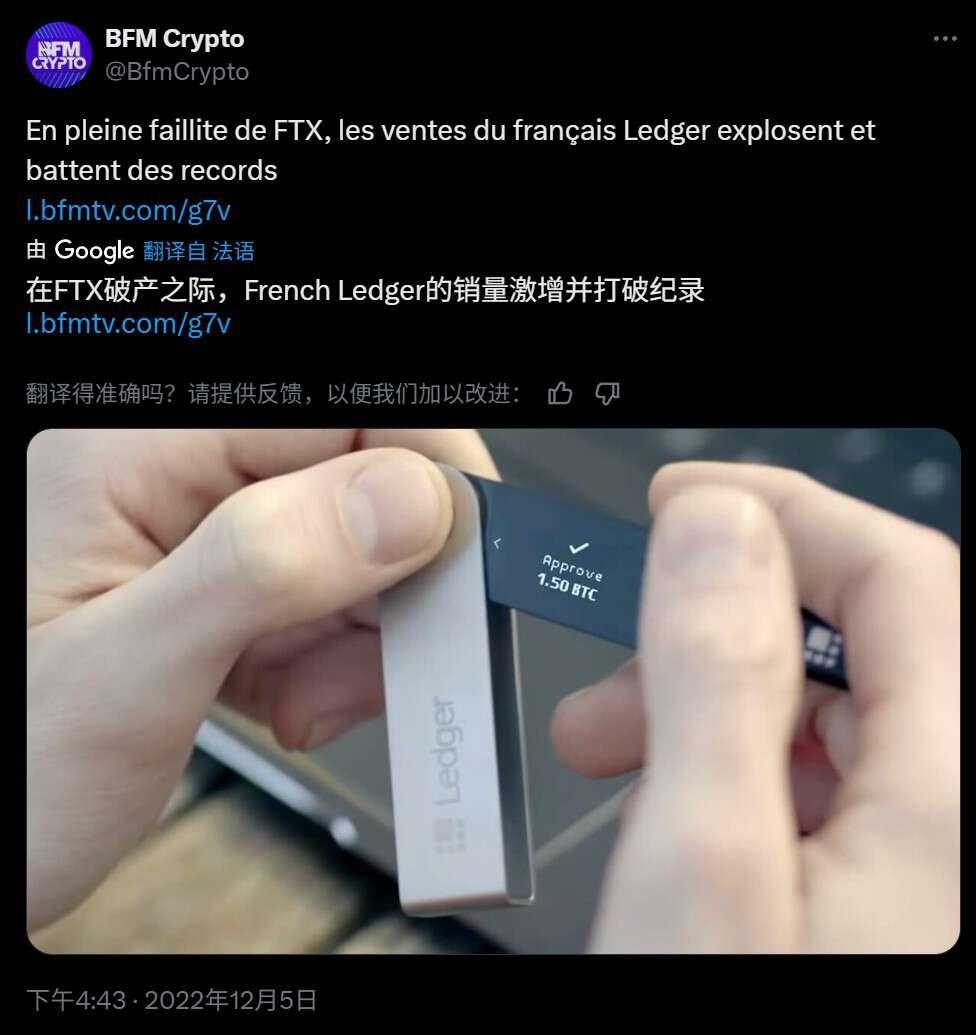
The real push that brought hardware wallets back into the core of user visibility came from two unexpected industry events:
First, the explosion of on-chain Summer in 2020 catalyzed a group of on-chain Degen users to start using hardware wallets for secure signing and contract interactions, completing a critical step in user education from 0 to 1;
Second, the FTX collapse in 2022 created a trust crisis due to the collapse of centralized exchanges (CEX), prompting many users to reassess private key management. "Not your keys, not your coins" transformed from an idealistic slogan into a real pain point, leading to a surge in interest in hardware wallets;
Since then, hardware wallets, which were once on the fringes, have officially entered the center of the Web3 security narrative.
However, to be realistic, the hardware wallets from the 1.0 era of Trezor and Ledger were indeed not suitable for ordinary users—initial setup and backup processes were complex, the operational threshold was high, the accompanying software was difficult to use, and prices often exceeding a thousand yuan discouraged most people before they could experience the value.
The emergence of brands like SafePal and OneKey has, to some extent, lowered the entry barrier by reducing prices and reconstructing the user experience, allowing hardware wallets to transition from geek-centric to mainstream. This strategy of "removing price barriers and emphasizing user experience" has been a significant catalyst in pushing hardware wallets from the geek circle to the mass market.
In fact, as long as the price is low enough and the user experience is friendly, users will be more willing to take the first step toward self-custody, even if it's just to "give it a try." Once they have a good experience and feel secure about their assets, they may transition from "trial users" to long-term users.
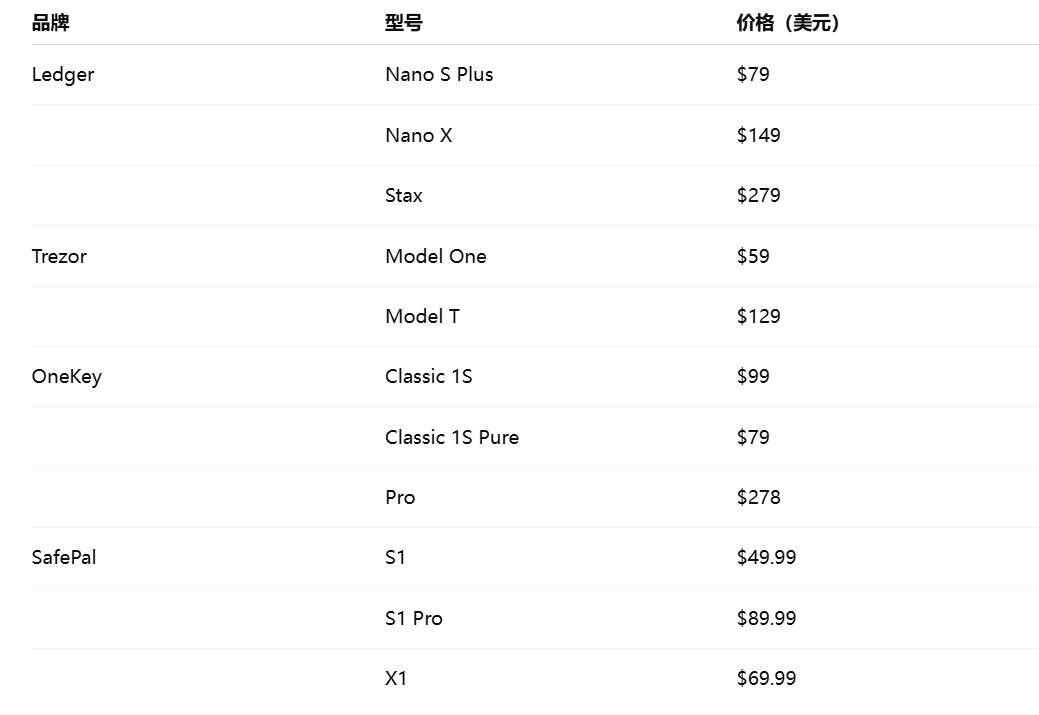
The market's demand for security has always been rigid, especially with the continuous expansion of the Web3 user base. Security should not be an advanced configuration but a basic public service.
This is why we say that security is not an accessory to Web3 but its foundation—after all, behind every successful scam, there may be a user who stops using Web3, and without any new users, the Web3 ecosystem will have nowhere to go.
From this perspective, regardless of whether hardware wallets are a "good business," they are at least becoming an indispensable business.
Overview of Mainstream Hardware Wallets
If a few years ago hardware wallets were still exclusive equipment for geek players, they are now gradually evolving into crypto infrastructure aimed at a broader user base.
I have used several hardware wallets, including Cobo, imKey, OneKey, and SafePal, and beyond the differences in experience, I have also clearly felt the rapid evolution of the industry—especially among Chinese-speaking users, apart from the two established overseas brands Trezor and Ledger, the most recognized and actively iterated products are OneKey and SafePal.
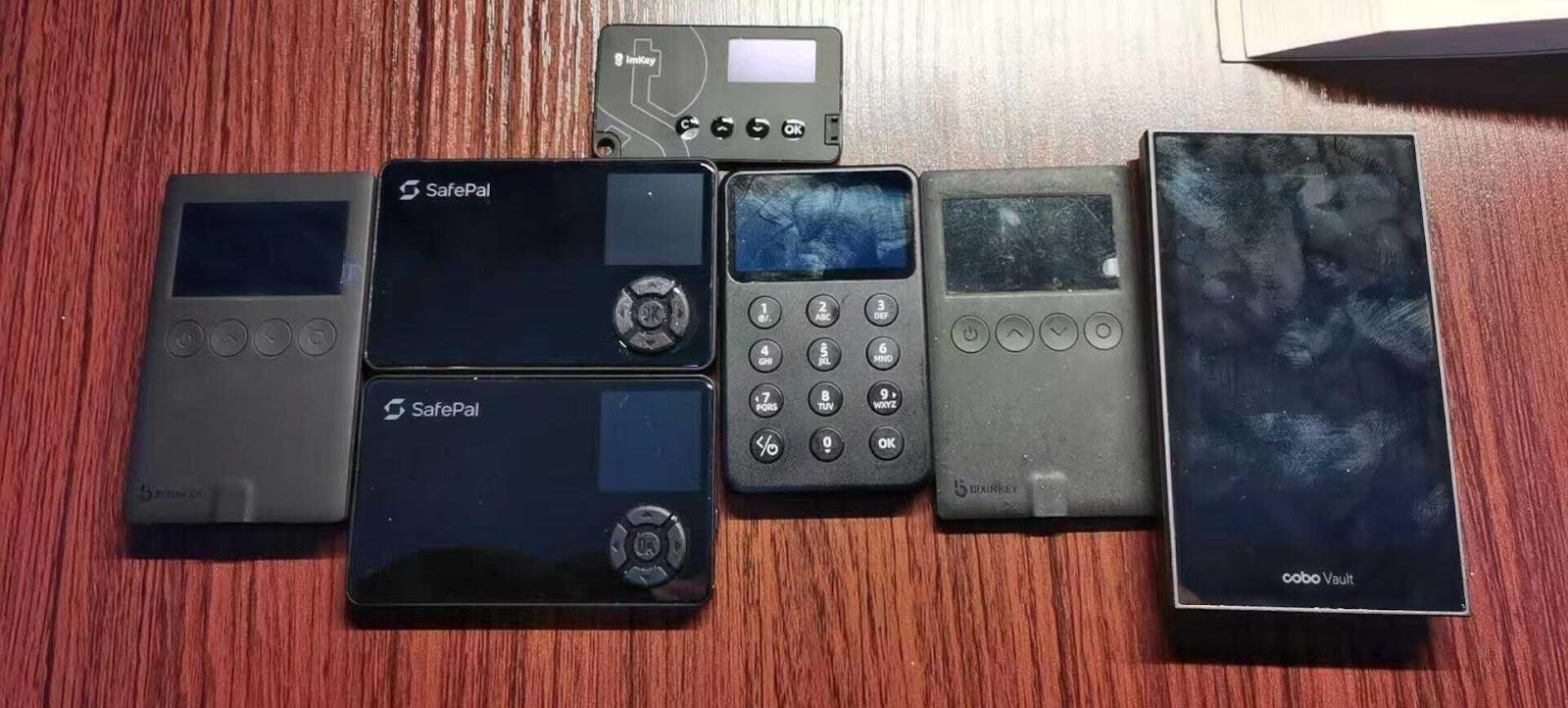
1. OneKey: Open-source philosophy + rapid user mindset construction
Among the mainstream hardware wallet manufacturers, OneKey, which spun off from Bixin, did not start early, but it quickly established a strong (Chinese-speaking) user recognition and formed a clear brand label—minimalism, security, and open-source—thanks to the narrative benefits of on-chain Summer.
In particular, in recent years, OneKey's series of products have gained a lot of user goodwill in the Chinese market, with representative products including:
OneKey Classic 1S / 1S Pure: A slim credit card-style hardware wallet aimed at users new to cold wallets;
OneKey Pro: Supports air-gapped signing, fingerprint encryption verification, and wireless charging, balancing security and convenience for advanced users;
Especially its classic product OneKey Classic, released in 2020, became a favorite among on-chain Degen users during the on-chain Summer, although this model is currently sold out.
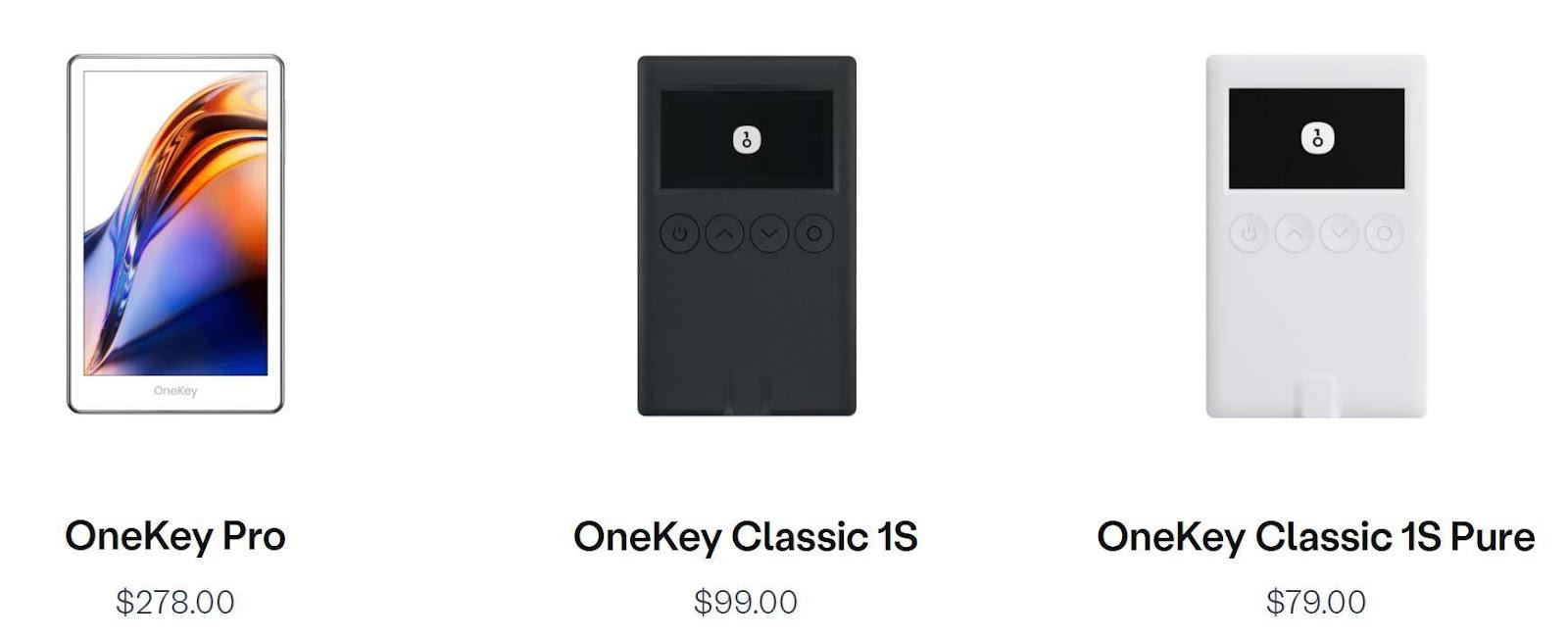
In recent years, OneKey has also begun to attempt to "break the circle" with its products, such as the recently launched USDC yield module, which attracted over $62 million in subscriptions, reflecting its active user base and community stickiness.
2. SafePal: From hardware to full-stack, Binance's nurturing "wallet OG"
Compared to OneKey, which just received investment from YZi Labs, SafePal is actually the earliest hardware wallet project supported by Binance, and its growth path is more aligned with Binance's nurturing projects:
In September 2018, SafePal was the only wallet brand selected for the first phase of the Binance Labs incubator program and underwent a 10-week incubation in San Francisco; by the end of the year, it received investment from Binance and officially launched its first hardware wallet product, S1, in the first half of 2019.
Subsequently, SafePal adopted a "small steps, quick runs" product strategy, gradually expanding its models to cover different niche markets and building a product matrix aimed at different user levels:
Entry-level hardware S1 (2019), Bluetooth model X1 (2023), advanced version S1 Pro (2024), all of which are open-source;
Accompanying software wallet app (2020) and browser plugin wallet (2022);
Telegram mini-program wallet (2024), on-chain bank accounts/MasterCard (2024), and other services;
However, although SafePal has mass-produced multiple hardware wallets, it still follows a user-friendly approach. For example, among its currently available products, the S1 Pro is the highest priced at only $89.99, the X1 Bluetooth model is priced at $69.9, and the S1 is as low as $49.99.
It is worth noting that SafePal is one of the few hardware wallet projects with a token—SFP was launched through Binance's IEO Launchpad in 2021, further familiarizing many Chinese-speaking users with the brand. Because of this, SafePal's features have always been reflected in its deep integration with the Binance ecosystem:
SafePal is currently the only wallet product deeply integrated with Binance—its app provides direct access to Binance's spot trading, margin trading, contract trading, and wealth management functions (in the form of sub-accounts), while also lightly integrating Binance's fiat deposit and withdrawal channels, allowing users to share Binance's trading liquidity and deposit/withdrawal channels in one-stop within the SafePal wallet, essentially meeting daily trading needs.
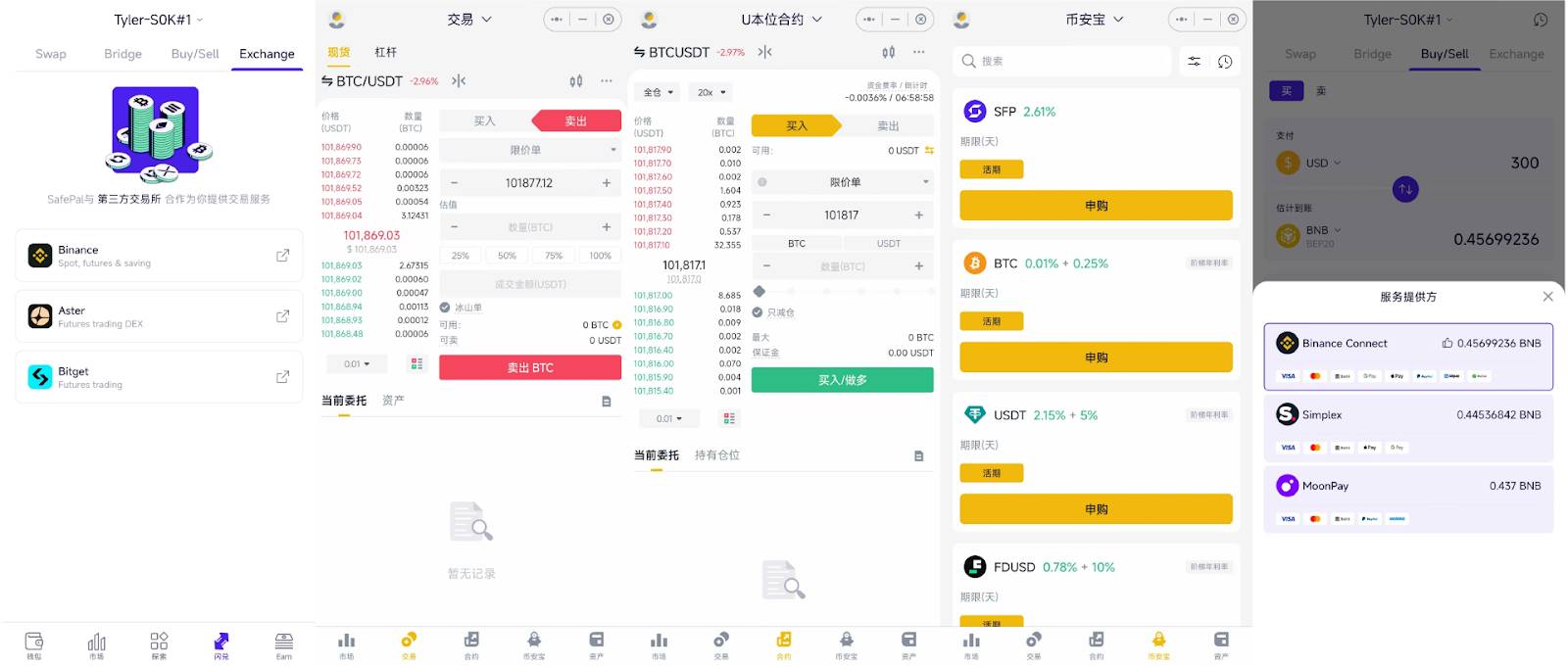
In addition, SafePal also has a first-mover advantage in supporting activities and ecological collaboration on the BNB Chain. For example, it currently supports gas-free transfers of stablecoins on the BNB Chain (I often use the SafePal app to transfer USDT/USDC and other stablecoins to save on gas fees).
Notably, in April, SafePal co-founder Veronica also became a mentor for the new phase of the YZi Labs incubator, which reflects the long-term relationship and industry influence it maintains with Binance's VC.

3. Ledger and Trezor
As mentioned above, Ledger and Trezor are the oldest overseas brands in the hardware wallet sector, but they have long been criticized for being "difficult to use" and "too expensive."
Among them, Ledger is currently the hardware wallet manufacturer with the highest cumulative sales globally, with over 6 million units shipped of the Nano S/Nano X series. It has a high brand reputation and compliance endorsement in the European and American markets, making it suitable for institutions and high-net-worth users with high requirements for private key hardware isolation and security certification.
Trezor is recognized as the "ancestor of hardware wallets" in the industry, having released the world's first hardware wallet in 2014. Its products, Trezor One and Trezor Model T, have a strong reputation in the BTC community, among geek users, and within libertarian circles, with an operational logic that leans towards geek-type users.
4. Keystone: Focused on Ultimate Security with QR Offline Solutions
Keystone is a fully open-source Air-Gap security product that uses an embedded system (no Bluetooth, USB, or Wi-Fi). It completes address generation, transaction signing, and other operations by scanning QR codes with a camera, ensuring that private keys never touch the internet. It is also an officially partnered hardware wallet with MetaMask, supporting integration with MetaMask.
Currently, the flagship model Keystone Pro is equipped with a 4-inch touchscreen, fingerprint recognition, and multiple security chips (three independent CC EAL5+ certified chips). It supports management of up to three sets of mnemonic phrases and can interact with mainstream wallets like MetaMask and Solflare via QR codes.
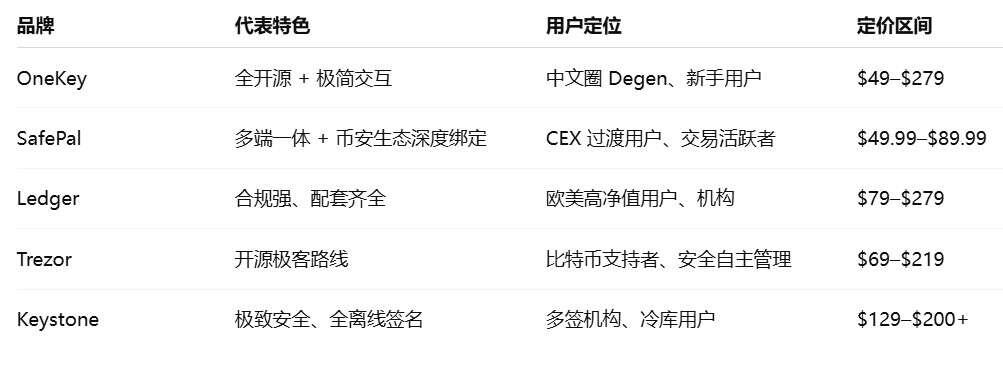
Overall, different hardware wallet players currently have varying focuses in product positioning, but they are all committed to building the next stage of "security × usability × interactivity" in crypto entry products.
Beyond "cold storage," from single hardware to full-stack services
The starting point of hardware wallets is security, but the true endpoint is far beyond that.
This is also a common trend among almost all mainstream wallet manufacturers today: while cold storage is indeed a core competitive advantage, relying solely on one or more hardware devices has become insufficient to create a significant differentiation barrier.
From a business perspective, the user demographic for hardware wallets is typically labeled as "on-chain Degen," "diamond-handed Holder," "crypto high-net-worth users," and other segments with extreme security needs. Therefore, for "hardware wallets," their core value lies in the offline storage and isolation protection of private keys.
However, as the crypto user base shifts from geeks to everyday users, the focus on "secure storage" is just the first step—more and more users are beginning to expect that wallets are not just repositories for cold storage but operational platforms that allow for smooth asset usage, encompassing trading, interaction, wealth management, and even offline payments for a broader experience.
In other words, the competitive dimension of hardware wallets is extending from "security capability" to "service capability."
This is also why hardware wallet manufacturers are beginning to shift towards "full-stack" solutions. Brands like SafePal and OneKey have long extended their functionalities to DeFi and TradFi scenarios, not just limited to "storing coins":
Upgraded on-chain operation experience: Supporting one-click swaps, multi-chain asset synchronization display, contract authorization parsing, etc., to lower the barriers for on-chain interactions;
Integration of on-chain payment scenarios: Incorporating Lightning Network, cross-chain bridges, stablecoin protocols to achieve rapid on-chain payments and asset flow between chains;
Ecosystem tool integration: Providing contract authorization parsing/removal tools, gas stations, built-in DApp browsers, plugin wallets, Telegram mini-programs, and other interactive modules to cover the "last mile" of users' on-chain activities;
There are even attempts like SafePal, which "brings" exchanges (Binance, Bitget) into the wallet, as well as imToken, SafePal, and TokenPocket integrating services like Fiat24 to achieve consumer-level innovations for bank account/MasterCard payments, further bridging fiat channels and offline consumption.
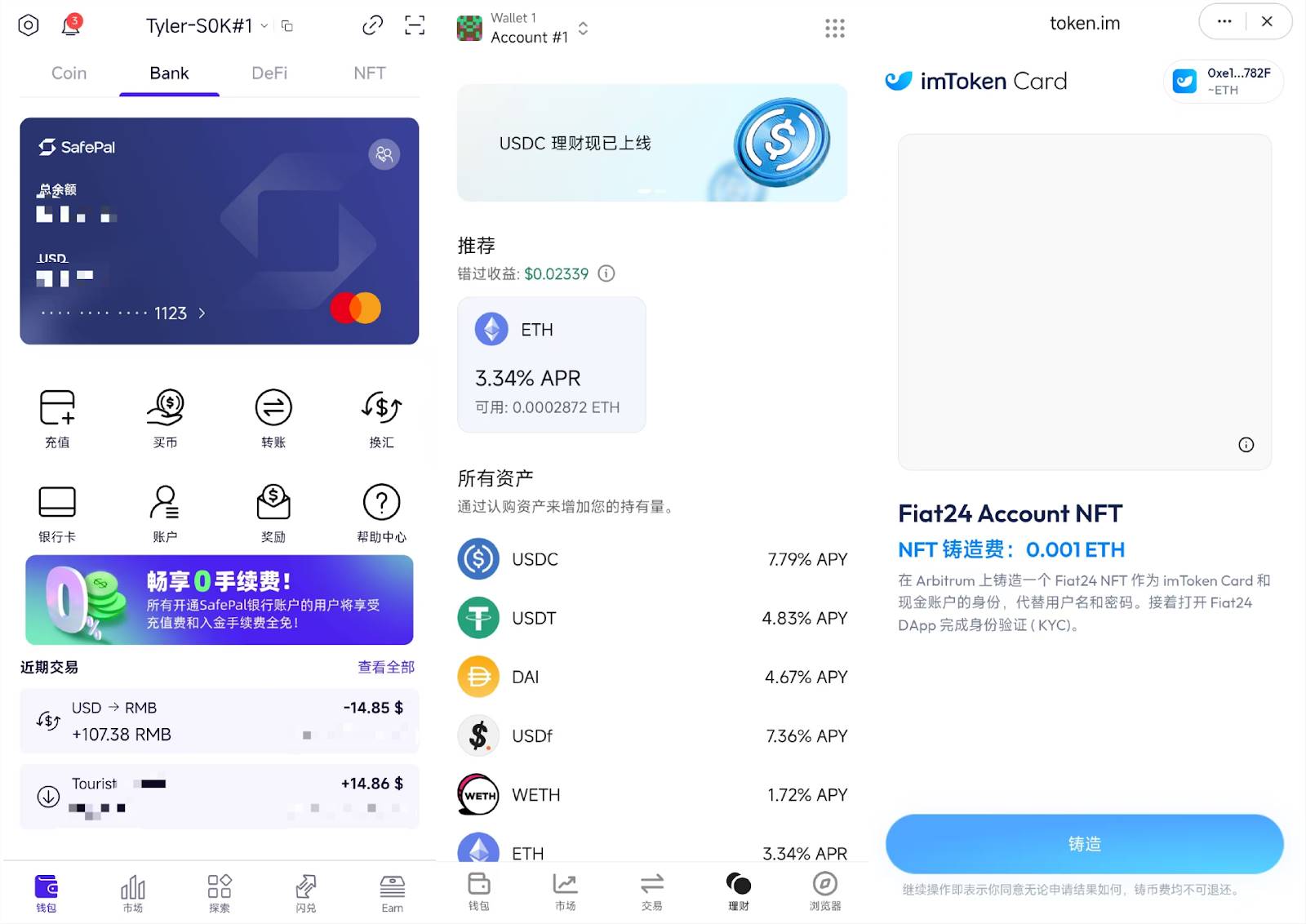
From left to right: SafePal "Bank" page, OneKey wealth management page, imToken Card page
This "full-stack path" is well represented by SafePal, the hardware wallet project that Binance invested in early on: starting from early hardware wallets, it has built app wallets, plugin wallets, offline payment accounts, and bank card services, currently forming a complete asset management closed loop covering "cold storage—on-chain interaction—offline usage."
This also means that hardware wallets are no longer isolated devices but rather the physical security foundation of an entire multi-end product matrix, balancing "hardware storage + app/plugin interaction + offline consumption payments," reflecting this major trend.
Looking at the entire industry, this is a signal that a consensus is forming. Objectively speaking, when we discuss the competitiveness of hardware wallets today, we are moving from "being secure" to "being usable" and then to "being enjoyable." Their role boundaries are continuously being expanded—from cold storage to multi-chain interaction, from on-chain asset management to offline deposits and withdrawals, the role boundaries of hardware wallets are being consistently broadened.
This may also be one of the reasons why Binance has re-entered the hardware wallet sector after seven years. Regardless of which path ultimately prevails, the second half of the hardware wallet story is clearly just beginning.
In conclusion
Wallets have always been seen as a battleground for Web3 entry, intersecting on-chain identity systems and offline payment channels.
For this reason, while this sector may seem to diverge, all players are actually converging towards the same goal: whether it is the international established brands Ledger and Trezor or the rising stars SafePal, OneKey, and Keystone, they are all ultimately heading in the same direction—building a comprehensive crypto wallet system that integrates private key security, on-chain interaction, and offline payments.
So, is a hardware wallet still a good business?
From the current signs, especially with YZi Labs' renewed investment, the answer leans towards affirmation—only it is no longer the simple "cold wallet" business that sells devices to a niche geek audience, but is evolving into a foundational role for self-custody of crypto assets, secure interactions, and offline implementations.
A truly "good business" often goes beyond just making money; it delves into the underlying logic of the industry, becoming an indispensable part.
The next stop for hardware wallets may very well be such a position.
免责声明:本文章仅代表作者个人观点,不代表本平台的立场和观点。本文章仅供信息分享,不构成对任何人的任何投资建议。用户与作者之间的任何争议,与本平台无关。如网页中刊载的文章或图片涉及侵权,请提供相关的权利证明和身份证明发送邮件到support@aicoin.com,本平台相关工作人员将会进行核查。




